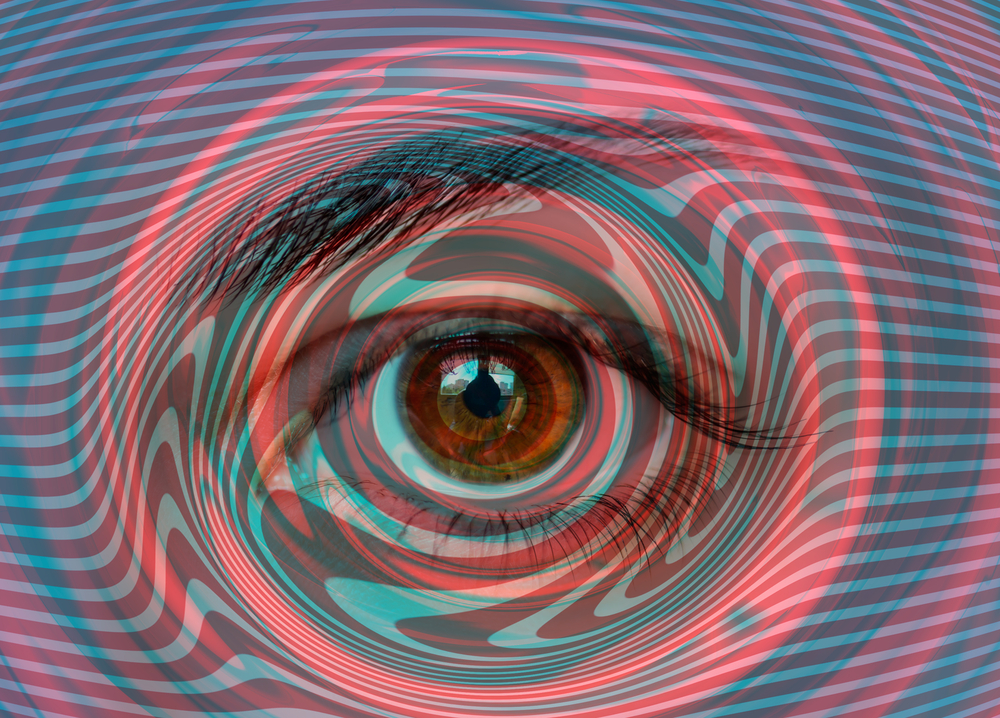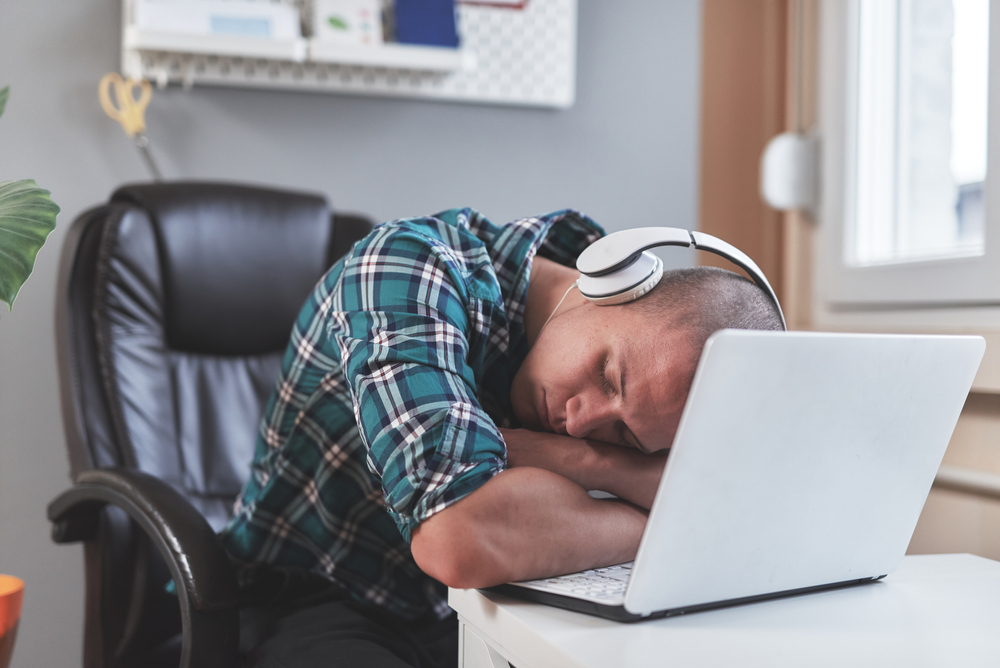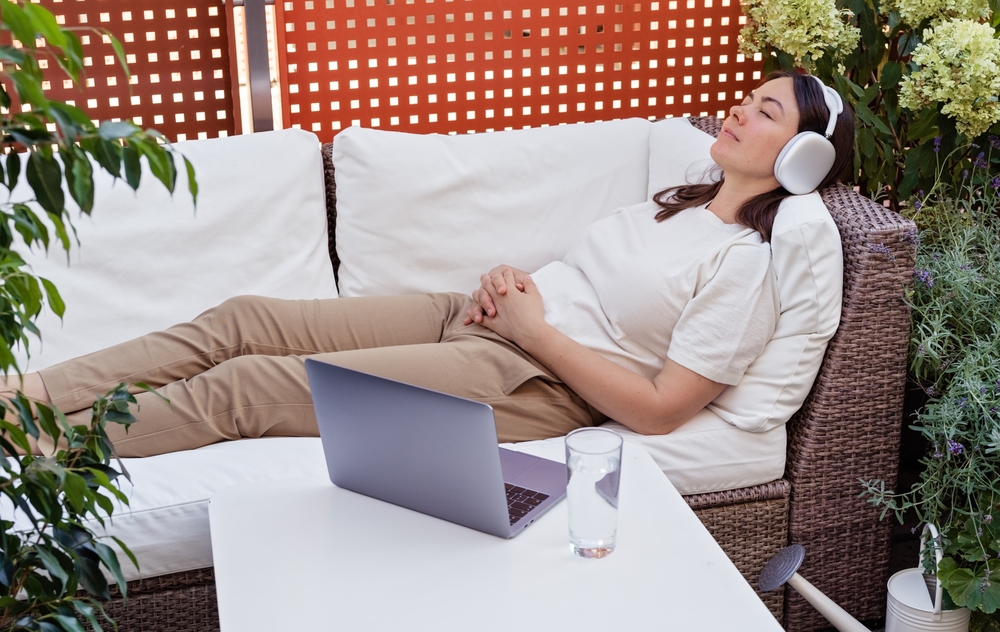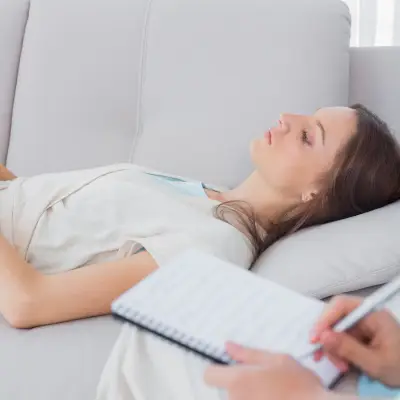Have you ever wondered how to hypnotise yourself? Maybe you’re curious about self-hypnosis for happiness, or perhaps you’re looking for techniques to manage stress and anxiety. Self-hypnosis is a powerful tool that can help you tap into your subconscious mind, bringing about positive changes and a deeper sense of well-being. This guide will break down what self-hypnosis is, how it works, and how you can start practising it today.
Jump to:
- What is Self-Hypnosis?
- What Happens During Self-Hypnosis?
- How to Do Self-Hypnosis: A Step-by-Step Guide
- Techniques for Self-Hypnosis
- How Long Does It Take for Self-Hypnosis to Work?
- How Do You Breathe During Self-Hypnosis?
- What is the Best Time of Day for Self-Hypnosis?
- Frequently Asked Questions About Self Hypnosis
- Become a Certified Hypnotherapist for £29
What is Self-Hypnosis?

Self-hypnosis is a form of focused relaxation that allows you to enter a trance-like state. This state of heightened awareness and concentration can help you access your subconscious mind, where you can work on personal goals, change habits, and improve your mental health. Unlike stage hypnosis, self-hypnosis is a personal practice that you control entirely.
What Happens During Self-Hypnosis?
During self-hypnosis, you enter a state of deep relaxation and focused attention. Your conscious mind becomes less active, allowing your subconscious mind to become more receptive to positive suggestions. You may feel a sense of calm and detachment from your surroundings, but you remain aware and in control throughout the process.
Recommended for you!
Best SellersHow to Do Self-Hypnosis: A Step-by-Step Guide

If you're wondering how to hypnotise yourself, follow these simple steps to get started. Each step is designed to help you enter a state of deep relaxation and tap into your subconscious mind effectively.
Step 1: Find a Quiet Space
Begin by selecting a quiet, comfortable space where you won’t be disturbed. This could be a cosy corner of your home, a peaceful spot in your garden, or even a quiet room at your workplace if it offers privacy. The key is to find a location where you feel safe and at ease.
Make sure you are sitting or lying down in a comfortable position. The more relaxed and comfortable you are physically, the easier it will be to enter a state of deep relaxation. You might want to use a soft blanket or pillow to enhance your comfort, and ensure the temperature of the room is to your liking.
Step 2: Set Your Intention
Before you begin your self-hypnosis session, take a moment to decide what you want to achieve. Having a clear intention is essential as it guides your subconscious focus during the session. Your goal could be to reduce anxiety, boost confidence, improve your sleep quality, or tackle a specific habit or issue.
Write down your intention if it helps to solidify it in your mind. Reflect on why this goal is important to you and how achieving it will positively impact your life. This step sets the foundation for your session, making your practice more purposeful and directed.
Step 3: Relax Your Body
Start your session by closing your eyes and taking a few deep, cleansing breaths. Focus on the rhythm of your breathing, allowing each inhale and exhale to bring you deeper into relaxation. Begin with your toes, consciously relaxing each part of your body as you move upwards. Imagine a wave of relaxation flowing from your toes up through your legs, torso, arms, and finally to your head.
With each breath, feel any tension melting away. You might visualise stress leaving your body with every exhale, creating a sense of calm and peace. Take your time with this step; the goal is to achieve a state of total physical relaxation.
Step 4: Enter the Hypnotic State
To deepen your relaxation and enter the hypnotic state, use visualisation techniques. Picture yourself descending a staircase, with each step taking you deeper into relaxation. Alternatively, imagine walking down a peaceful path in a beautiful, tranquil place. Count slowly from ten to one, feeling yourself becoming more relaxed with each number. As you count, imagine descending further into a state of calm and focus.
The visualisation serves as a bridge to your subconscious mind, making it more receptive to the suggestions you'll introduce in the next step. Engage all your senses in this process, noticing the sights, sounds, and feelings of your imagined scene.
Step 5: Give Yourself Suggestions
Once you feel deeply relaxed and in a hypnotic state, it’s time to introduce positive affirmations related to your goal. These suggestions should be clear, concise, and stated in the present tense. For example, if your goal is to reduce stress, you might say, “I am calm and relaxed. Stress flows away from me.” If you're aiming to boost confidence, you might repeat, “I am confident and capable.”
Repeat these affirmations several times, allowing them to sink deeply into your subconscious mind. Visualise the positive outcomes associated with these suggestions, feeling the emotions and benefits as if they are already happening. This reinforcement helps to embed these positive changes into your subconscious.
Step 6: Return to Wakefulness
When you’re ready to end your session, gently guide yourself back to wakefulness. Count slowly from one to five, with each number bringing you closer to your normal waking state. Feel yourself becoming more alert and aware with each count. By the time you reach five, open your eyes, stretch, and take a moment to appreciate the calm and focused state you’ve achieved.
Reflect briefly on your session, recognising the progress you’ve made towards your goal. This gradual transition helps to ensure you wake up feeling refreshed and ready to continue your day with a positive mindset.
Techniques for Self-Hypnosis
There are various techniques for self-hypnosis that you can experiment with to find what works best for you. Here are a few popular methods:
Deep Breathing
Focusing on your breath can help you enter a state of relaxation quickly. Inhale deeply through your nose, hold for a few seconds, and exhale slowly through your mouth. Repeat this process until you feel calm and centred.
Visualisation
Creating vivid mental images can enhance your self-hypnosis experience. Imagine a peaceful place where you feel safe and happy. This could be a beach, a forest, or any location that brings you a sense of tranquillity. Spend a few minutes immersing yourself in this scene, noticing the sights, sounds, and sensations.
Progressive Muscle Relaxation
This technique involves tensing and then relaxing different muscle groups in your body. Start with your feet, tensing the muscles for a few seconds, then releasing and noticing the relaxation. Move up through your body, ending with your head and face.
Guided Imagery
Listening to a pre-recorded guided imagery session can help you achieve a deeper state of hypnosis. There are many resources available online, including apps and videos, that can guide you through a self-hypnosis session.
How Long Does It Take for Self-Hypnosis to Work?

The time it takes for self-hypnosis to work can vary from person to person. Some may notice immediate effects after just a few sessions, while others might need to practice regularly for a few weeks before experiencing significant changes. Consistency is key, so try to set aside time for self-hypnosis daily or several times a week.
How Do You Breathe During Self-Hypnosis?
Breathing plays an important role in self-hypnosis. Slow, deep breaths help calm your nervous system and prepare your body for relaxation. Try to breathe in for a count of four, hold for a count of four, and exhale for a count of four. Repeat this pattern until you feel your body and mind relax.
What is the Best Time of Day for Self-Hypnosis?
The best time of day for self-hypnosis depends on your personal schedule and when you feel most relaxed. Many people find that early morning or before bed are ideal times, as these are typically quieter periods and your mind is naturally transitioning between states of consciousness. Experiment with different times to see what works best for you.
Frequently Asked Questions About Self Hypnosis
Can You Hypnotise Yourself Out of Anxiety?
Self-hypnosis can be an effective tool for managing anxiety. By regularly practising self-hypnosis, you can train your mind to respond to stress with calmness and clarity. During your sessions, focus on suggestions that promote relaxation and a sense of control, such as “I am in control of my emotions” or “I am safe and secure.”
Can I Hypnotise Myself to Lose Weight?
Self-hypnosis can be a supportive tool for weight loss. By reinforcing positive behaviours and attitudes towards food and exercise, you can create healthier habits. During your self-hypnosis sessions, focus on suggestions like “I enjoy eating healthy foods” or “I am motivated to exercise regularly.” Consistency and patience are important, as changes in behaviour take time.
Can Hypnosis Go Wrong?
Self-hypnosis is generally safe when practised correctly. However, it's important to approach it with an open mind and realistic expectations. If you have underlying psychological conditions or concerns, it might be best to consult with a professional hypnotherapist before starting self-hypnosis.
Can Self-Hypnosis Change Your Body?
While self-hypnosis can’t directly change your physical body, it can influence your behaviours and attitudes, which can lead to physical changes over time. For instance, using self-hypnosis to promote regular exercise and healthy eating can result in weight loss and improved physical health.
Recommended for you!
Best SellersBecome a Certified Hypnotherapist for £29
Self-hypnosis is a powerful and accessible tool for personal growth and well-being. If you’re interested in learning more about hypnosis, consider enrolling in the Hypnotherapy Practitioner Course at Centre of Excellence. This comprehensive course is available at a discounted price of £29 and will provide you with the knowledge and skills to become a certified hypnotherapist.













